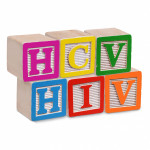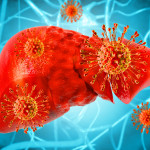People who are coinfected with HIV and hepatitis C virus and undergo treatment for HCV are less likely to be cured if they have a low CD4 count, an AIDS diagnosis or advanced liver disease, or are male.
Researchers analyzed real-world data on nearly 2,400 HIV/HCV-coinfected individuals who were treated for hep C with direct-acting antiviral (DAA)–based therapy in Madrid between November 2014 and August 2016.
“First and foremost, our data confirm the high efficacy and safety of DAA-based therapy in HIV/HCV-coinfected persons, with cure rates above 90 percent and less than 1 percent of treatment discontinuations because of adverse [health] events,” says the study’s lead author, Juan Berenguer, MD, PhD, an infectious disease specialist at the Hospital General Universitario Gregorio Marañón in Madrid.
Overall, 92 percent of the cohort was cured. The cure rate was 94 percent for those without cirrhosis, 91 percent for those with compensated cirrhosis (the milder form of the advanced liver disease) and 81 percent for those with decompensated cirrhosis (the more severe form).
After adjusting their data for various factors, the researchers found that variables associated with a raised risk of not being cured of hep C after receiving a DAA regimen included: being male (1.8-fold raised risk); having an AIDS diagnosis (1.7-fold raised risk); having a hep C viral load of 800,000 or above (1.6-fold raised risk); having a CD4 count below 200 (2.3-fold raised risk); having compensated cirrhosis (1.4-fold raised risk); having decompensated cirrhosis (2.9-fold increased risk); taking Sovaldi (sofosbuvir) plus Olysio (simeprevir) (2.8-fold raised risk); taking Sovaldi plus ribavirin (3.4-fold raised risk); and taking Daklinza (daclatasvir) plus Olysio (12-fold raised risk).







Comments
Comments